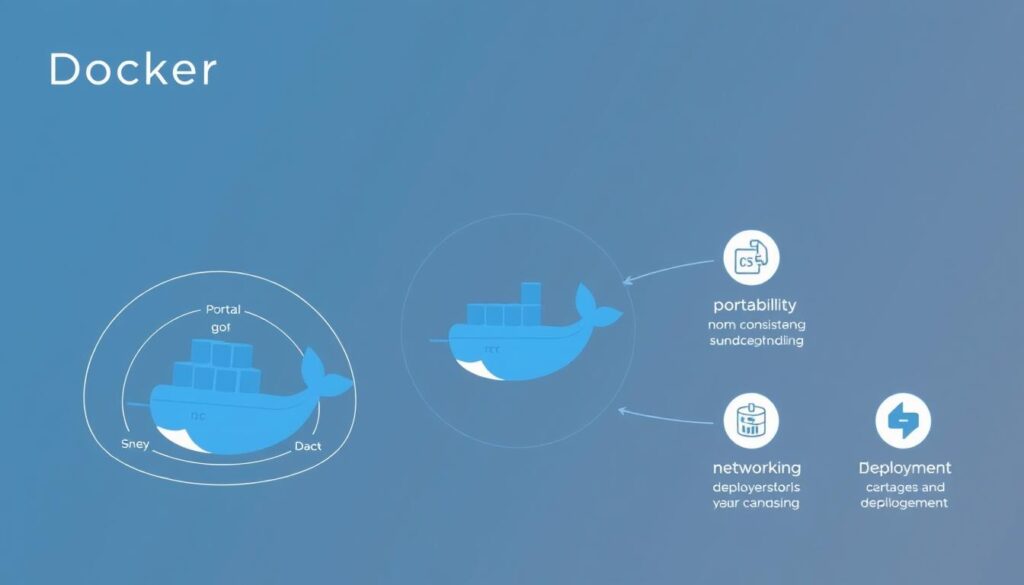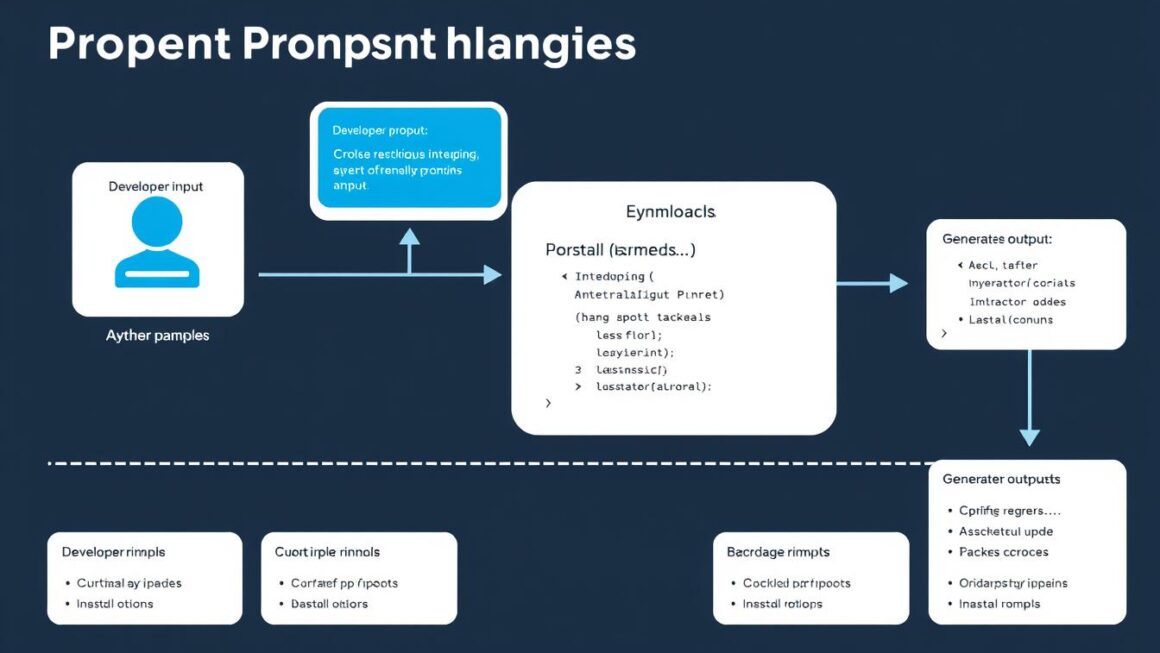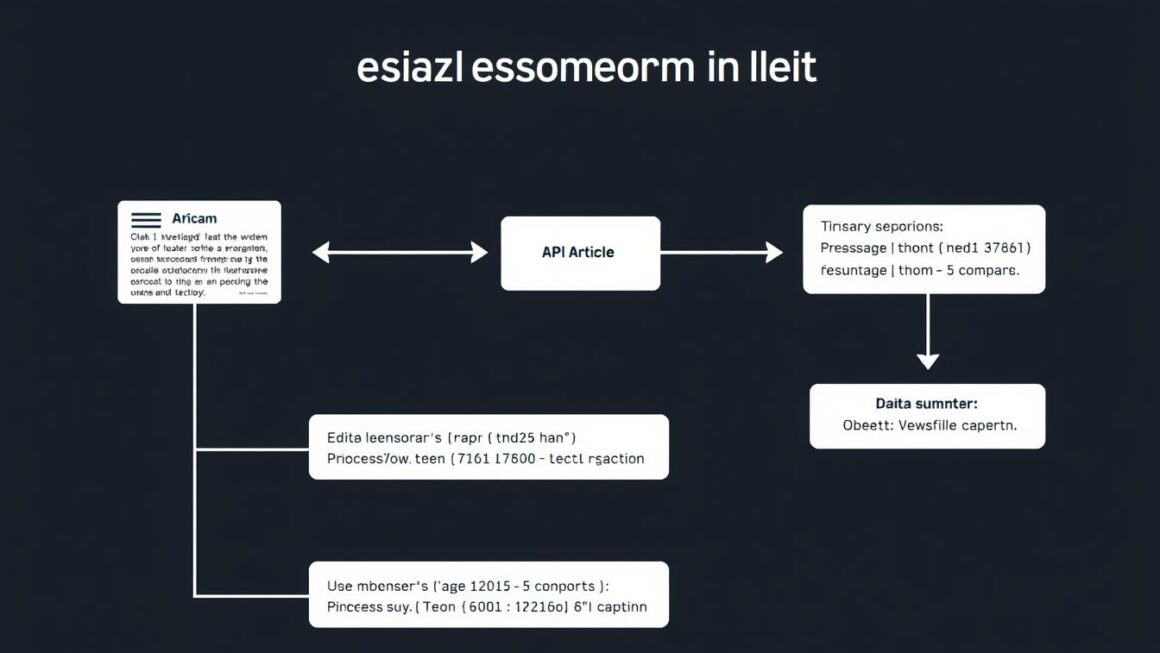Did you know that over 3.5 million Docker applications are deployed worldwide? This has changed how developers work. Docker’s containerization technology makes it easier by putting your apps and what they need into one container.
Docker makes our work easier. It lets us write code without worrying about setting up environments. This way, we can work together better and deploy apps more easily.
Key Takeaways
- Docker simplifies the development process by providing a consistent environment.
- Containerization technology packages applications and dependencies into a single container.
- Docker enhances collaboration among developers by ensuring a uniform workflow.
- It’s a popular platform among web developers for its speed and flexibility.
- Docker’s broad user base and collaborative capabilities make it a go-to platform.
What is Docker and Why Developers Should Care
Docker helps developers avoid the “it works on my machine” problem. It ensures apps work the same everywhere. Docker is a tool that lets developers package and run apps in containers. Containers are light and easy to move around, making app development, testing, and deployment simpler.
The Problem Docker Solves
Docker tackles two big issues for developers: environment differences and deployment problems.
Development Environment Inconsistencies
Different environments can cause problems when trying to fix issues. Docker fixes these issues by giving a consistent place for all stages of app development.
Deployment Challenges
Deploying apps can be tricky and often goes wrong. Docker makes it easier by putting everything needed for an app into one container. This makes deployment and management simpler.
Key Benefits for Development Teams
Docker brings several big advantages to teams, like consistency, isolation, and efficiency. It helps teams work better together and faster. This means less time and effort to get apps ready for use.
Docker is now a key tool for developers. It helps them work more efficiently and ensures apps work the same everywhere. This makes Docker a must-have for any team.
Understanding Docker’s Core Components
To start with Docker, knowing its main parts is key. Docker’s design is modular, with each part essential for containerizing.
Containers vs. Virtual Machines
Docker containers differ from virtual machines (VMs). VMs let you run many operating systems on one host. Containers, on the other hand, let many apps run on one OS. This makes containers lightweight and efficient, needing no separate OS for each app.
Images, Containers, and Registries Explained
Docker’s main parts are images, containers, and registries. An image is a template with the app and its needs. A container is an image in action. Registries hold images, making sharing and managing them easy. Together, these parts help us build, deploy, and manage apps well.
- Images are used to create containers.
- Containers are runtime instances of images.
- Registries store and manage images.
The Docker Ecosystem
The Docker world includes many tools and services that make containerizing better. Docker Desktop and Docker Hub are two big parts of this world.
Docker Desktop
Docker Desktop is an easy app for developers. It lets them build, test, and deploy containers locally. It makes managing containers and images simple.
Docker Hub
Docker Hub is a cloud registry for sharing and managing images. It has a huge collection of public images. Users can also create and manage their private images.
Docker for Developers: A Simple Use Case to Get You Started
Let’s explore a simple Docker use case to get you started. Docker containers help web developers create web apps with consistent environments. This is true from development to production.
Our Example Project: A Web Application
Our project is a simple web app that shows Docker’s benefits. It uses a basic tech stack with a web server and database. By using Docker, our app becomes portable and scalable.
Project Requirements and Goals
The main goal is to containerize our web app and database with Docker. We want a smooth development experience with lightweight, efficient containers. We’ll set up a Docker environment, create Dockerfiles, and use Docker Compose to manage containers.
Why This Use Case is Perfect for Beginners
This use case is great for beginners because it covers Docker basics clearly. You’ll learn about creating containers, managing images, and orchestrating them. It also shows how Docker makes development easier, helping you work with teams and deploy apps.
Setting Up Your Docker Environment
Before you start using Docker, you need to set it up on your computer. The setup depends on your operating system. Docker’s installation is easy, but you must follow the steps for your OS carefully.
Installation Guide for Different Operating Systems
Installing Docker changes a bit based on your OS. Here are the steps for each:
Windows Installation
To install Docker on Windows, download Docker Desktop from the Docker website. Follow the prompts to install. Make sure your system is Windows 10 64-bit: Pro, Enterprise, or Education.
macOS Installation
For macOS, download Docker Desktop from the Docker website. You need macOS Sierra 10.12 or newer. Drag the Docker icon to the Applications folder to finish.
Linux Installation
On Linux, you need to set up the Docker repository and install the Docker Engine. The steps vary by Linux distribution (like Ubuntu, CentOS). Check the official Docker documentation for your distribution’s instructions.
Verifying Your Installation
After installing Docker, check if it’s working by opening a terminal or command prompt. Type docker --version to see the Docker version. Test your installation with docker run hello-world.
If it works, you’ll see a success message. This is important to know you’re ready to use Docker for your projects.
Creating Your First Dockerfile
Making a good Dockerfile is vital for a smooth Docker workflow. A Dockerfile is a text file that guides the creation of a Docker image. It lists the base image, needed dependencies, and build commands.
Dockerfile Syntax and Structure
A Dockerfile has a series of commands that build a Docker image. Each command is simple, with a clear syntax. For instance, the FROM command picks the base image for our Docker image.
Best Practices for Writing Efficient Dockerfiles
Following best practices in Dockerfile writing is key. This means keeping layers to a minimum, picking the right base images, and removing extra files.
Minimizing Layers
Every Dockerfile command adds a new layer to the image. Fewer layers mean a smaller, faster image. We can merge similar commands to reduce layers.
Using Appropriate Base Images
The base image choice greatly affects our Docker image. Picking the right base image makes our image smaller and compatible with our app.
Cleaning Up Unnecessary Files
To keep our image small, we should remove extra files and dependencies. This includes deleting temporary files and caches after they’re used.
Building and Running Your Docker Container

The Dockerfile is ready; now, let’s build our Docker image. With a Dockerfile, we can create an image and run it as a container. This makes our application accessible and functional.
Building Your Docker Image
To build a Docker image, we use the docker build command. This command follows the Dockerfile’s instructions to create an image. It’s important to give our image a meaningful name for easy identification later.
For example, if our Dockerfile is in the current directory, we can build an image by running: docker build -t my-web-app .
Running Your Container
After we have our Docker image, we can run it as a container with the docker run command. This command starts a new container from our image and runs it. We can customize how our container runs with various options.
Port Mapping
Port mapping is key for accessing our application from outside the container. We map a container port to a host port with the -p flag. For example, docker run -p 8080:80 my-web-app maps port 8080 on the host to port 80 in the container.
Volume Mounting
Volume mounting lets our container keep data or share files with the host. We use the -v flag to mount a volume. For example, docker run -v /host/path:/container/path my-web-app mounts a host directory to a container directory.
Docker Compose for Multi-Container Applications
Docker Compose makes it easier to run many containers together. You can list your application’s services, networks, and volumes in one YAML file. This simplifies managing complex applications.
Simplifying Multi-Container Management
Docker Compose makes managing many containers simpler. You can define and set up all containers in one file. This cuts down on the hassle of deploying and managing apps.
Creating a docker-compose.yml File
A docker-compose.yml file is key for any Docker Compose project. It outlines your application’s services, networks, and volumes. Here’s how to make one:
Defining Services
Services are the core of your app. In the docker-compose.yml file, you list each service. You tell it which Docker image to use, ports to expose, and any dependencies. For instance:
- Give the service a name and choose a Docker image.
- Set up ports and volumes as needed.
- Include any environment variables the service needs.
Managing Dependencies
Docker Compose lets you set up service dependencies. This ensures services start in the right order. It’s vital for apps where services need each other to work right. By setting up dependencies, your app starts smoothly.
Using Docker Compose, developers can make deploying and managing complex apps easier. It’s a key part of the Docker world, making development smoother.
Integrating Docker into Your Development Workflow
As we dive deeper into Docker, adding it to our development workflow is key. Docker makes it easy to work in the same environment at every stage, from local to production. This cuts down on the mess and differences between different environments.
Docker for Local Development
Docker makes local development smooth and isolated. It helps manage dependencies well, making sure your local setup matches production. Docker makes it easy for new developers to get started with a complete environment.
Docker in CI/CD Pipelines
Docker is also essential in Continuous Integration/Continuous Deployment (CI/CD) pipelines. It makes these pipelines faster and more reliable. Docker ensures apps are built and tested consistently, lowering the chance of environment problems. This is key for reliable and repeatable deployments.
Pros and Cons of Docker for Development

Docker is a key tool in modern development. It boosts productivity and efficiency. Yet, it also has its challenges.
Advantages of Docker
Docker has many benefits for developers. It ensures consistency across environments and is isolated and resource-efficient.
Consistency Across Environments
Docker makes apps run the same everywhere. This is thanks to Docker containers. They bundle apps and their needs into one package.
Isolation and Resource Efficiency
Docker containers keep apps separate. This means they don’t mess with each other. Docker is also light, using less system resources than virtual machines.
Limitations and Challenges
Docker has its downsides too. Developers face a learning curve and performance considerations.
Learning Curve
Docker brings new ideas and commands. While easy to start, mastering it takes time and effort.
Performance Considerations
Docker is usually efficient but can slow down in some cases. Knowing these limits helps improve Docker’s performance.
In summary, Docker is great for development, ensuring apps run the same everywhere. But, it’s important to know its learning curve and performance issues to get the most out of it.
Who Should Use Docker: Developer Profiles
Knowing who can benefit from Docker is key to using it well. Docker is great for developers who work on projects that use containers and microservices.
Ideal Use Cases
Docker is perfect for projects that need consistent environments at every stage. It’s great for:
- Developers on microservices-based apps
- Teams handling many projects with different needs
- Projects needing easy scaling and management
This shows Docker’s flexibility and how it can make development smoother.
When Docker Might Not Be the Best Choice
Even with its many benefits, Docker isn’t always the best choice. For example, small projects with simple needs might not need Docker’s complexity. Also, teams new to containers might find it hard to learn.
Troubleshooting Common Docker Issues
Working with Docker can sometimes lead to problems. We’ll look at common issues and how to fix them. This will help you get back to work smoothly.
Container Startup Problems
Starting containers can be tricky, but usually, it’s just a small fix. Issues often stem from wrong settings, missing pieces, or not enough resources. To find out what’s wrong, check the logs with docker logs .
Networking and Volume Issues
Problems with networking and volumes can slow you down. Make sure your network and volume settings are correct. Use docker network ls and docker volume ls to check them out.
If you’re having trouble connecting, try restarting Docker or setting up your network again.
Conclusion
Docker makes deploying and developing apps easier by creating a stable environment. It helps developers manage and arrange containers well. This ensures apps work smoothly together.
We’ve talked about Docker’s big advantages, like better teamwork and less trouble. We’ve also looked at the Docker world, how to write Dockerfiles, and best practices. Knowing these helps developers use Docker to make their work easier.
Docker solves old problems in app development, making it flexible and growable. It lets developers concentrate on coding, not the setup. This shows how vital Docker is for today’s app making. We suggest developers dive into Docker to enhance their work process.



